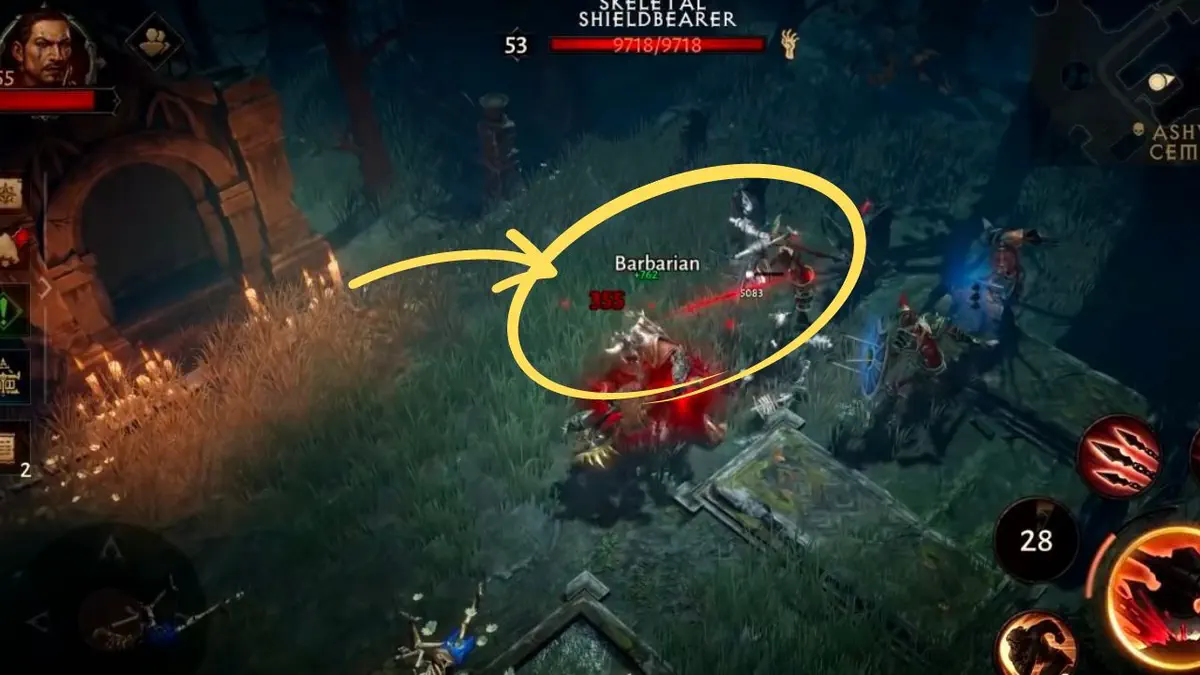Show Juicy Feedback to Indicate Player Damage in Video Games
The Acagamic Tip Tuesday #04
 Screenshot of Diablo 3
Screenshot of Diablo 3Each Tuesday, I will send you a tip from the world of UX Research & Design for games. At my website The Acagamic, I focus on training people to become better researchers and designers for games and beyond.
Each tip will take less than 3 minutes to read.
Use UI iconography, text size, colour coding, timing, and audio to show feedback of impactful player damage in your combat designs.
In games with exciting combat scenes, it’s crucial to give players concise and intriguing feedback to make the experience satisfying and immersive. This feedback, which gamers often call “juicy,” is the visual, audio, and physical cues that show how battle moves and player damage affect the game. It can be hard to find a good mix between making the game immersive and giving players juicy feedback, but user testing will show what players really like. In this newsletter issue, we’ll look at how Diablo 3, Minecraft Dungeons, and the remake of Final Fantasy 7 use “juicy feedback” to show on-screen damage to the player.
Diablo 3: A Symphony of Destruction
Diablo 3, a hack-and-slash action RPG, is well-known for its highly engaging and fast-paced combat system. The game achieves this through a variety of visual and audio cues that provide juicy feedback for player damage. For example, when a player’s character lands a successful hit on an enemy, the game displays an exaggerated burst of particle effects, often accompanied by a satisfying sound effect. Additionally, damage numbers appear above the enemy’s head, providing the player with a clear indication of the impact of their actions.
While some may argue that these embellishments detract from the game’s immersive quality, user testing and the overall positive reception of Diablo 3’s combat system suggest that players appreciate the immediate and engaging feedback provided. The combination of visual and audio cues reinforces the sense of accomplishment and keeps players invested in the game.

Minecraft Dungeons: Blocky Brawls and Vibrant Visuals
Minecraft Dungeons takes the beloved blocky aesthetic of Minecraft and applies it to a dungeon-crawling action RPG. The game features a wide array of combat moves and abilities, and it uses juicy feedback to communicate player damage effectively. Similar to Diablo 3, Minecraft Dungeons showcases particle effects and damage numbers when a player successfully damages an enemy. The game also employs exaggerated animations and vibrant colours to emphasize the impact of each hit.
This juicy feedback approach works well within the context of Minecraft Dungeons, as it aligns with the game’s colourful and cartoony visual style. Players appreciate the clear and engaging feedback provided during combat, helping them gauge the effectiveness of their actions and adapt their strategies accordingly.

Final Fantasy 7 Remake: Modernized Feedback for a Classic RPG
The Final Fantasy 7 remake brings the classic RPG into the modern era, featuring a revamped combat system that skillfully blends real-time action with strategic, turn-based elements. To provide players with juicy feedback, the game utilizes a combination of visual and audio cues, such as impactful animations, colourful particle effects, and satisfying sound effects.
In addition to these cues, the Final Fantasy 7 remake also includes a stagger mechanic, which visibly and audibly communicates the player’s success in dealing significant damage to an enemy. When an enemy is staggered, its movements become slower, and it takes increased damage for a brief period, providing a clear and engaging indication of the player’s progress in battle.

The game’s developers have struck a balance between immersive storytelling and providing juicy feedback, resulting in an engaging and visually appealing combat system.
To create a satisfying and engaging combat experience, it is essential for video games to provide enticing feedback to signify player damage. Diablo 3, Minecraft Dungeons, and the remake of Final Fantasy 7 demonstrate how visual embellishments and aural cues can effectively convey the impact of combat manoeuvres while maintaining an immersive gaming environment.
If you enjoy this newsletter, the best compliment you could pay me would be to share it with others on Twitter (see sharing icons below).
Three Game UX Tweets
The dev team behind Moving Out handled the game with care. Read a deep dive on how playtesting made the game better: https://t.co/DymFHJrq3Y Out now on PS4. pic.twitter.com/BHSm3dVXRT
— PlayStation (@PlayStation) April 30, 2020
Many people ask me:What does a person working in Game UX do? In games you have 3 career paths:
- UI Designer
- UX Designer
- User Researcher Its the holy trinity of user-centered design This is my attempt at showing you how these responsibilities overlap.
1. Let me remap my controls.
— Eric Bailey (@ericwbailey) January 28, 2021
2. Let me make my UI text bigger. No, bigger than that.
3. Talk to, and test with disabled users.